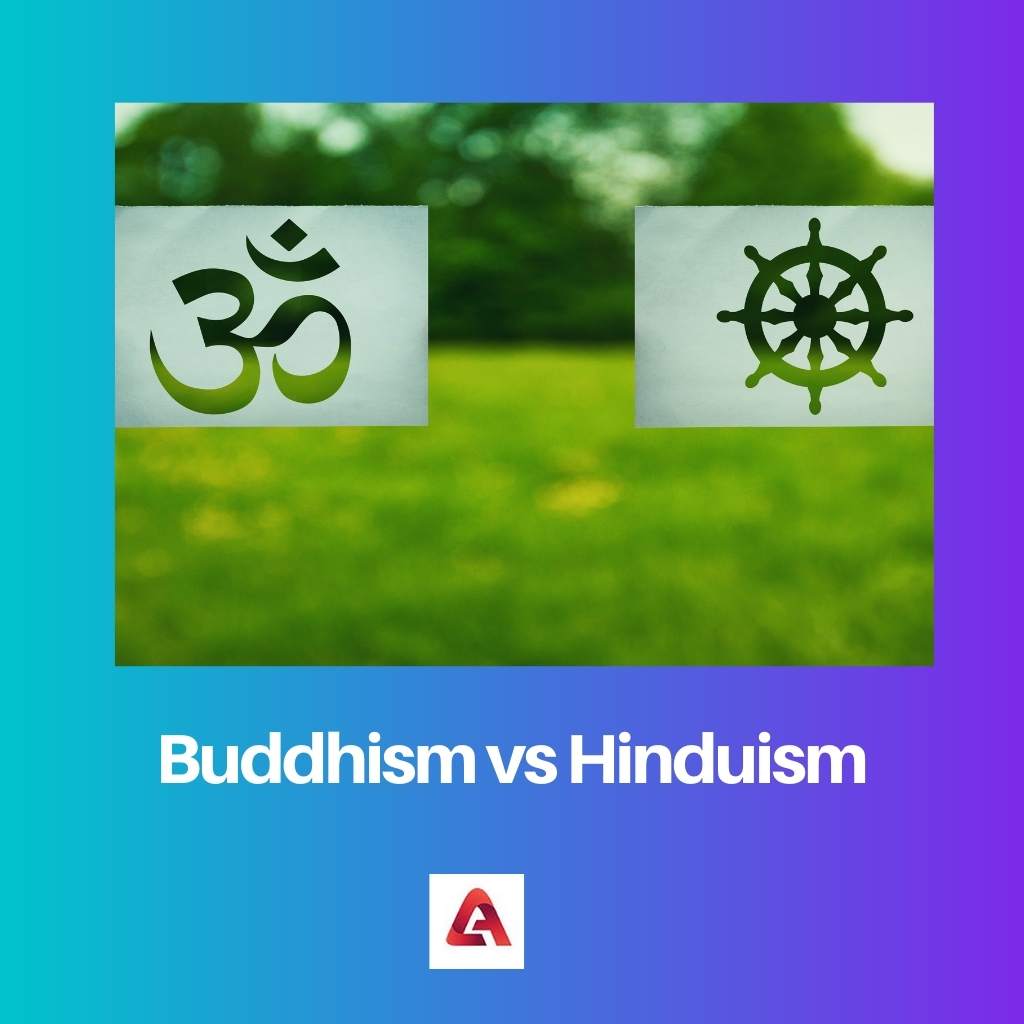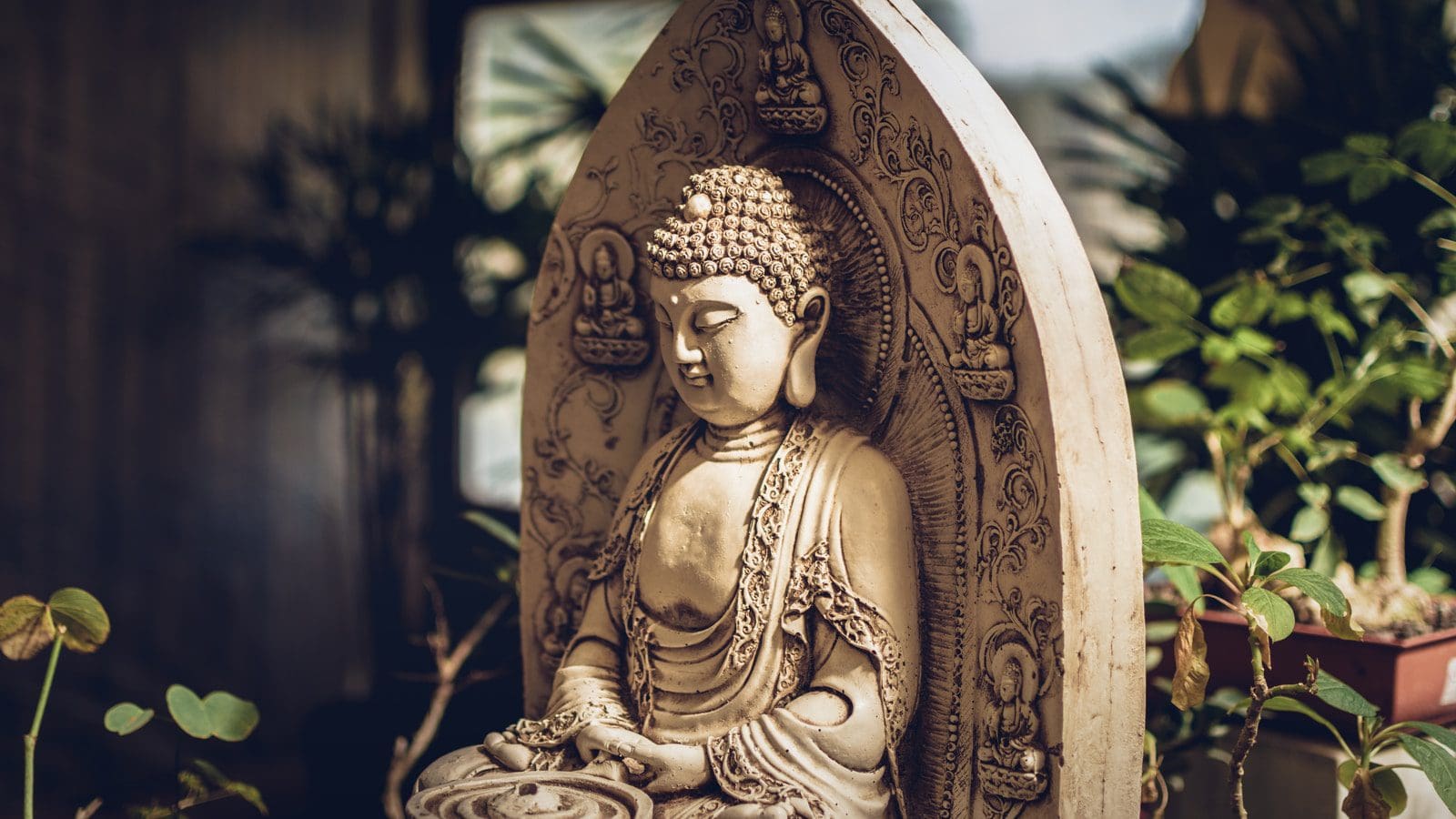Different people have been practicing different religions for ages. Everyone has the equal right to possess and practice any religion they want and have a belief in it. There are various religions that can’t even be counted; two are Hinduism and Buddhism.
Both these religions have prominent importance among people. Hinduism and Buddhism are two old religions that began in India. There are a couple of contrasts and likenesses between these two religions.
Key Takeaways
- Buddhism is a nontheistic religion founded by Siddhartha Gautama and is based on the Four Noble Truths and the Eightfold Path.
- Hinduism is a polytheistic religion with roots in ancient India and is characterized by a caste system and belief in reincarnation.
- While both religions share some beliefs, such as karma and the pursuit of enlightenment, they differ in their views on the ultimate goal of existence and the existence of a supreme being.
Buddhism vs Hinduism
Buddhism is a non-theistic religion that originated in ancient India around the 5th century BCE and was founded by Siddhartha Gautama. Hinduism is one of the oldest religions in the world, dating back to ancient India, and it is a diverse and complex religion that encompasses a wide range of beliefs.

The religion of Buddhism includes one person practicing various beliefs and performing various spiritual practices that Lord Buddha taught. The people who follow Buddhism are called Buddhists.
The religion is followed widely by so many people that it is the fourth-largest religion in the world today.
Hinduism is a commonly followed religion, making it the third-largest religion in the world. This religion is called Satana dharma, which means one can permanently lead a life. No founder found this religion. The Sanskrit language is the primary language of the Hindus.
Comparison Table
| Parameters of Comparison | Buddhism | Hinduism |
|---|---|---|
| Followers | Buddhist are people who follow this religion. | Hindus are people who follow this religion. |
| What they follow | People following this religion follow the teachings given by Lord Gautama Buddha. | People following this religion follow writings in Vedas and Upanishads. |
| Rank | This religion is ranked fourth-largest in the world. | This religion is ranked third largest in the world. |
| Main language | Pali is said to the spiritual language of this religion. | Sanskrit is said to the spiritual language of this religion. |
| Spiritual leader | In this religion, the spiritual leader is called Dalai Lama. | A spiritual leader does not exist in this religion. |
| Symbols | The lotus and dharmachakra are two symbols used to denote this religion. | The Om and Swastika are two symbols that are used to denote this religion. |
What is Buddhism?
The religion of Buddhism includes one person practicing various beliefs and performing various spiritual practices that Lord Buddha taught. The people who follow Buddhism are called Buddhists.
The religion is followed widely by so many people that it is the fourth-largest religion in the world today.
By many Hindus, the Lord Buddha is considered the ninth statue of Lord Vishnu. There exist almost 530 million people today who follow the religion of Buddhism.
A place where a Buddhist goes to pray or worship his or her or her God is known as a shrine. Each sub-religion inside the Buddhism religion has a religious leader who is known to be called the Dalai lama.
A female priest or a Buddhist monk is known as a Bhikkhunis, and a male priest or a Buddhist monk is known as a bhikkus. The Hinayana and the Mahayana are two major parts of the religion of Buddhism.
Pali is the main language of the Buddhism religion. The concept of sin has no existence in this religion. Dharmachakra and lotus are the two main symbols of this religion.

What is Hinduism?
Hinduism is a commonly followed religion, making it the third-largest religion in the world. This religion is called Satana dharma, which means one can permanently lead a life. No founder found this religion. The Sanskrit language is the primary language of the Hindus.
A person who follows Hindus is known as a Hindu. Almost 1.35 billion people follow Hinduism, making it the third-largest religion in the world.
A Hindu worships his God in a place known as a temple. In this religion, no person is appointed as a spiritual leader. A priest in a temple is called a yogi.
There are so many sub-castes and sub-religion under the religion of Hinduism that celebrates many auspicious days on many days such as Ram Navami, Ganesh Chaturthi, Diwali, Holi, etc.
The Om and Swastika symbol are two main symbols of the Hindu religion. There is a lot of importance given to Vedas in this religion.

Main Differences Between Buddhism and Hinduism
- People who follow Buddhism are known as Buddhists, and on the other hand, people who follow Hinduism are known as Hindus.
- People following the Hindu religion follow writings in the Vedas and Upanishads, and on the other hand, people following the Buddhism religion follow the teachings given by Lord Gautama Buddha.
- Buddhism is a religion that is ranked fourth-largest in the world, and on the other hand, Hinduism is a religion that is ranked third-largest in the world.
- Pali is the main language of the religion of Buddhism, and, on the other hand, Sanskrit is the main language of the religion of Hinduism.
- The spiritual leader in Buddhism is said to be called the Dalai Lama; on the other hand, there is no spiritual leader in Hinduism.

- https://books.google.com/books?hl=en&lr=&id=7WaBHA0AcZUC&oi=fnd&pg=PA1&dq=hinduism+vs+buddhism&ots=XJ2DjLipBQ&sig=Bf8e6TSXZGLpOj_wRUd1nOMNYG0
- https://books.google.com/books?hl=en&lr=&id=KbPgG6ondlUC&oi=fnd&pg=PA3&dq=hinduism+vs+buddhism&ots=ZgeG2nXz8f&sig=jwKJLx_1mCoRiyFgkIqLNC7atv4

The profound significance of Buddhism and Hinduism is evident in the detailed descriptions of their principles and traditions. It’s a testament to the enduring legacy of these ancient religions.
Absolutely, the rich cultural and spiritual tapestry of Buddhism and Hinduism offers a rich source of knowledge and understanding about human belief systems.
The comparison table provides a concise overview of the key differences and similarities between Buddhism and Hinduism. It’s truly enlightening.
Yes, the comparison table simplifies the understanding of both religions, making it easier to appreciate their distinct characteristics.
The distinctions between Buddhism and Hinduism, from their spiritual leaders to their primary symbols, offer a captivating glimpse into the diversity of religious traditions.
Indeed, the depth of cultural and spiritual significance within Buddhism and Hinduism is truly remarkable.
I completely agree, the diversity and depth of these ancient religions are truly fascinating to explore.
The detailed explanations of Buddhism and Hinduism shed light on the rich traditions and practices of each religion. It’s a valuable insight into our world’s diverse belief systems.
Absolutely, these religions have deeply ingrained principles and traditions that contribute to their enduring influence on humanity.
The in-depth explanations of Buddhism and Hinduism have expanded my understanding of these religions. It’s remarkable how they both share common elements while maintaining their unique identities.
Indeed, the similarities and differences between Buddhism and Hinduism highlight the diverse spiritual landscape of our world.
The differences between Hinduism and Buddhism are fascinating to learn about. Both religions have such rich and complex histories.
I agree, it’s incredible how much there is to learn about these ancient religions and their philosophies.
Absolutely, the cultural and spiritual significance of Hinduism and Buddhism is truly remarkable.
The comparisons and insights into Buddhism and Hinduism are truly thought-provoking. It’s remarkable how these religions have shaped the spiritual landscape with such profound depth and complexity.
Indeed, the reflections on Buddhism and Hinduism offer profound insights into the depth and diversity of religious traditions across the world.
The comprehensive overview of Buddhism and Hinduism provides a valuable insight into the profound principles and rituals that shape these religions.
Absolutely, the enduring legacy of these religions demonstrates the enduring influence of ancient traditions on modern society.
The detailed comparisons and explanations of Buddhism and Hinduism have broadened my understanding of these complex belief systems. It’s truly enlightening to explore their intricacies.
I couldn’t agree more, the exploration of Buddhism and Hinduism enhances our appreciation for the diverse spiritual perspectives existing in our world.
The information provided about Buddhism and Hinduism has deepened my appreciation for the complexities of these religions. Their profound philosophies are truly thought-provoking.
Absolutely, the complexities of these religions provide an enriching perspective on spirituality and human belief systems.